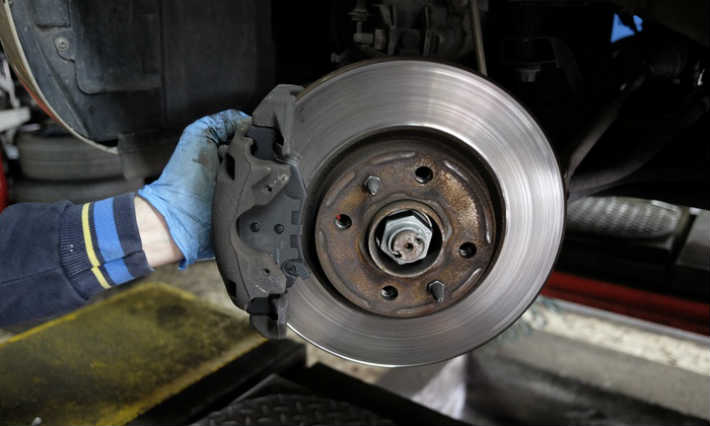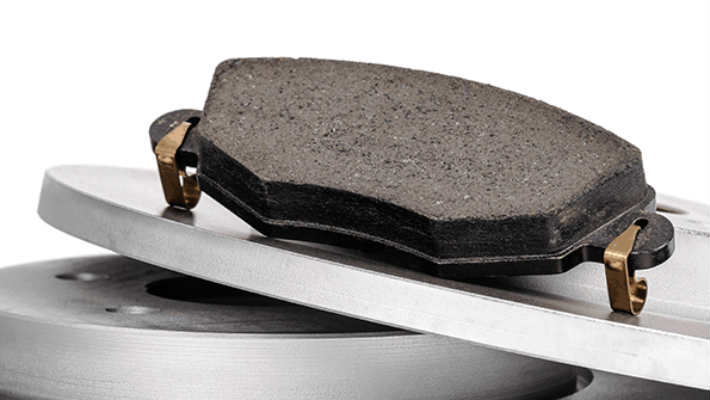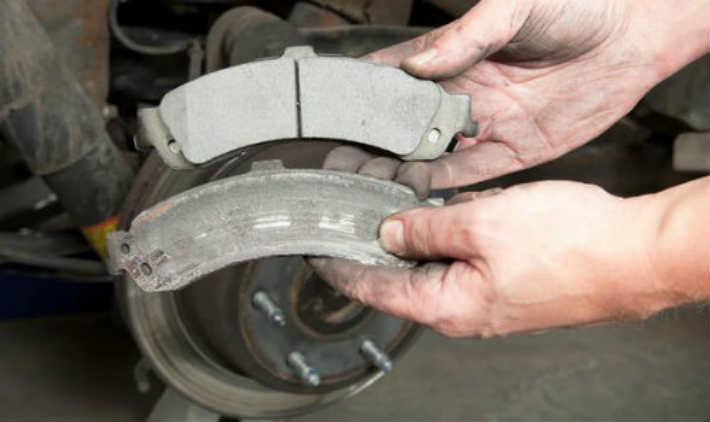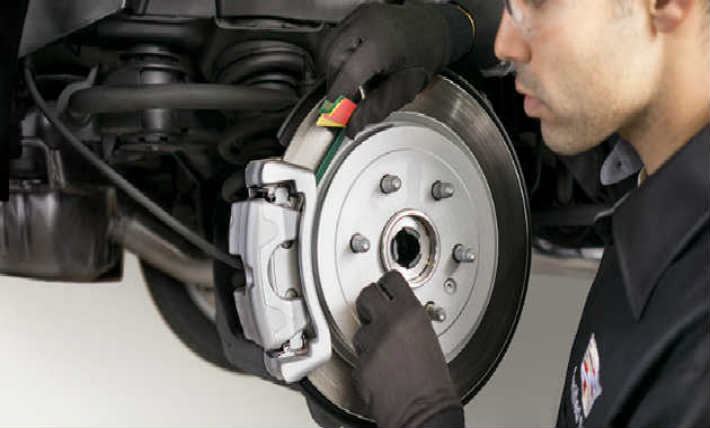Brake pads are a part of a newer braking system which uses a disc instead of a drum (this was used on older vehicles). They are basically small steel pieces with friction material on one side. When pressed against the rotor, the pad applies pressure which stops the wheel from turning. This motion is activated when the pressure is transferred by the brake fluid, which makes the caliper squeeze the pads when you press on the pedal.

Types
Organic (Non-Asbestos)
Brake pads come with different types of friction material and NAO (non-asbestos organic) is the most affordable option. What was formerly know as an asbestos pad is now a brake pad that has fibre, glass, rubber, cellulose resin and even Kevlar. These pads are soft and quiet but they are also easier to wear out and create a lot of dust, which is why they are best for every-day driving.
Low-Metallic NAO
These car brake pads have a mixture of organic formula and about 10% to 30% copper or steel. This allows them to transfer heat more easily but they are known to make a lot of dust and noise too.

Semi-Metallic
Made of 30% to 65% metal, usually copper, steel wool and wire, these pads are one of the most popular types since they are extremely resistant to heat and very durable. They are best suited for high-performance vehicles but do not perform as well in low temperatures. Semi-metallic pads are more affordable than ceramic car brake pads.
Ceramic
The core of these car brake pads is ceramic fibres and similar filler materials. A ceramic brake pad provides the best heat transfer and it doesn’t wear the rotor as much, whilst being extremely quiet and cleaner than most of the pads mentioned above. There is one big drawback though and that is their optimal temperature which is higher than any of the above-mentioned pads.

When to Visit the Mechanic
Noises
If you happen to hear loud screeching when hitting the brakes this means that either the pads need to be inspected or replaced. But if you hear grinding noises that means the pads have been worn out completely which means you should replace them as soon as possible and avoid driving the vehicle.
Responsiveness & Vibrations
Excessive vibrations occur when the rotor is warped as the pad can’t retain constant contact with its surface. This usually is the result from an extensive period of uninterrupted braking and it’s a clear indicator that you should visit the mechanic immediately.
If the pedal doesn’t apply the pressure on the brakes when you push against it, it can be a sign of a leak in the hydraulics of the braking system. In this case, the pedal often feels soft which is another reason why you should get it towed to the nearest mechanic.
Pulling
If your vehicle tends to pull to one side when braking, it usually means that there is debris in the hydraulic system. But if you car drifts off to the side when you take your hands off the steering wheel, this is a clear sign of a worn out pad caused by a misaligned tire. Again, if that is the case, the mechanic should be your next stop.
Visual Check
If you can see the pad through the holes in the wheel, then take a flashlight and inspect them for wear. If the pads are less than 3 mm thick then you’ll need to replace them. Pads should be replaced in pairs since in case one is worn out more than the other that can make for other issues such as a dirty or warped rotor, tire misalignment, sticky caliper pistons etc.

How to Measure Brake Pads?
Measuring the pad is done for identification and when you can’t see the pads through the holes in the wheel. For the former you need to measure the length of the pad’s backing plate and friction material without the overhanging clips – the same goes for the width. For the latter, you need to take the pad out and measure its width at multiple points across its length. If there is 0.5mm difference between the measurements, it might be due to an issue with the caliper.
Do You Have to Bleed the Brakes When Changing Pads?
The brakes should always be bled after the discs have been changed. If only the pads are being replaced, the brake fluid doesn’t need changing, just check if the fluid reservoir is full. If the brake fluid hasn’t been changed for 2 or more years then you need to bleed the brakes – avoid doing this if you have air in the brake lines.
Signs That You Have Air in the Brake Lines
Although brake lines are steel tubes reinforced with hoses, air can still get into them. The most common sign of air in your brake lines is when the brake pedal feels spongy when you press, when the pedal is too far back or when it’s too soft.



